A motorcycle accident can be overwhelming, especially when determining fault. If you’ve been involved in a collision with a car at a busy intersection like Manatee Avenue and 301 Boulevard in Bradenton, understanding fault is important, especially after the new tort-reform law was passed in Florida. As experienced motorcycle accident attorneys, Bernard Walsh, David Goldman, and Daniel Murphy, at Goldman, Babboni, Fernandez, Murphy & Walsh are here to help guide you through the complicated process of establishing fault in a post-tort-reform era. Relieve your stress and put the burden of your accident on us, our patners will explain the key factors that influence fault determination in motorcycle-car accidents, focusing on the unique characteristics of busy intersections like the one at Manatee Avenue and 301 in Bradenton. By understanding the elements involved in determining fault, you’ll be better equipped to protect your interests and seek fair compensation for your injuries and damages.
Determining Fault in a Motorcycle vs Car Accidents At Intersections Like Manatee Avenue and 301 Boulevard
When a motorcycle collides with a car at a busy intersection, determining fault requires a thorough investigation and careful analysis of the circumstances. Fault in accidents like these hinges on proving which party acted negligently.
Establishing Negligence
To determine fault, you need to establish which party failed to exercise reasonable care. This involves examining factors such as adherence to traffic laws and signals, proper use of turn signals and headlights, maintaining a safe following distance, and yielding the right-of-way when required. For instance, if a car turns left at the intersection of Manatee Avenue and 301 Boulevard without yielding to an oncoming motorcycle, the car driver may be deemed at fault.
Following all of Florida’s traffic laws and signals is crucial for a good outcome, especially after the new law. Drivers must obey traffic lights and stop signs, as running a red light or failing to stop at a stop sign can clearly indicate fault. Complying with speed limits is another vital aspect; driving too fast or too slow for conditions can contribute to accidents. Proper use of turn signals and headlights are essential as well. Drivers are required to signal their intentions when turning or changing lanes, and failure to use turn signals can lead to collisions and is a strong indicator of negligence. Additionally, driving without headlights at night or in poor weather conditions can indicate negligence.
Maintaining a safe following distance is another key factor. Tailgating reduces reaction time and increases the likelihood of rear-end collisions, so drivers must keep a safe distance from the vehicle in front of them. Adequate stopping distance considering speed and road conditions must also be maintained to avoid collisions. Yielding the right-of-way when required is critical, especially at intersections like Manatee Avenue and 301 Boulevard. Drivers must yield to oncoming traffic when making left turns, and failing to do so is a common cause of accidents. Additionally, drivers must yield to pedestrians at crosswalks and be cautious of cyclists sharing the road.
Consider a scenario where a car makes a left turn at the intersection of Manatee Avenue and 301 Boulevard. If the driver fails to yield to an oncoming motorcycle, the car driver may be at fault. If the light was green for the oncoming motorcycle, the car making the left turn should yield. The car driver must use turn signals to indicate the left turn and yield to oncoming traffic, in this case, the motorcycle.
Collecting Evidence to Establish Negligence
Collecting evidence to establish negligence is crucial. Police reports, which document observations, witness statements, and issue citations, are critical in establishing facts. Eyewitness testimonies provide third-party accounts of the accident, and video evidence from traffic cameras can show the sequence of events leading to the accident. Physical evidence, such as skid marks, vehicle damage, and debris locations, helps reconstruct the accident, while accident reconstruction experts use this evidence to determine how the accident occurred and who was at fault.
The Role of Physical Evidence in Motorcycle Accident Reconstruction
- Skid Marks:
- Indicate the speed of vehicles at the time of braking.
- Show attempts to avoid a collision.
- Reveal loss of control due to sudden braking or adverse road conditions.
- Vehicle Damage:
- Tells a detailed story about the impact and forces involved.
- Helps infer positions and movements before the crash.
- Front damage indicates rear-ending; side damage suggests side-impact collision.
- For motorcycles, damage patterns can reveal rider ejection and post-impact path.
- Debris Locations:
- Helps reconstruct the sequence of events.
- Indicates direction and speed of vehicles at impact.
- Shows post-collision vehicle movements and final resting positions.
Manatee Avenue and 301 Boulevard: Heightened Risk of Motorcycle Collisions
Manatee Avenue and 301 Boulevard in Bradenton are known for their heightened risk of motorcycle collisions. Several factors contribute to the increased danger for motorcyclists at this busy intersection. First and foremost, the heavy traffic volume on both Manatee Avenue and 301 Boulevard significantly raises the risk of accidents. These major thoroughfares experience constant vehicle flow throughout the day, particularly during peak hours. The sheer number of vehicles increases the likelihood of collisions, posing a particular threat to motorcyclists who are more vulnerable in traffic.
The complex layout of the intersection adds to the risk. With multiple lanes, turning points, and traffic signals, navigating this intersection can be confusing, especially for drivers unfamiliar with the area. This complexity often leads to misjudging distances or speeds when changing lanes or making turns, common causes of accidents involving motorcycles. The timing of traffic signals is another critical factor. Inadequate or poorly timed signals can lead to congestion and rear-end collisions, especially if vehicles do not have sufficient time to clear the intersection. Motorcyclists, who are often less visible to other drivers, are particularly at risk in these scenarios.
Pedestrian and cyclist traffic also contributes to the hazards at this intersection. Manatee Avenue and 301 Boulevard are frequently used by pedestrians and cyclists, requiring drivers to be extra cautious. Crosswalks and bike lanes demand that drivers yield appropriately, and failure to do so can result in severe accidents involving motorcyclists. High-speed limits on both roads mean vehicles are often traveling at speeds that can lead to severe accidents. High-speed collisions are particularly dangerous for motorcyclists, who are more likely to suffer significant damage and injuries.
Distracted driving is another critical factor. The busy nature of the intersection, with numerous businesses, signage, and heavy traffic, can divert drivers’ attention from the road. This increases the risk of accidents caused by distracted driving, which can be particularly deadly for motorcyclists. Finally, adverse weather conditions such as heavy rain or fog can further complicate navigation through this intersection. Reduced visibility and slippery roads require drivers to adjust their speed and driving behavior. Motorcyclists are especially vulnerable in such conditions, as they have less stability and protection compared to other vehicles.
Conducting a Thorough Investigation to Accurately Determine Fault
An in-depth investigation is crucial for accurately determining fault. This process typically includes gathering eyewitness accounts, analyzing police reports, reviewing traffic camera footage, and examining physical evidence at the scene. You should also consider consulting accident reconstruction experts who can provide valuable insights into the sequence of events leading to the collision.
Comparative Negligence Considerations
Florida follows a pure comparative negligence system, meaning fault can be shared between parties. For example, if a motorcycle was speeding on Manatee Avenue when a car changed lanes without signaling, both parties may share some degree of fault. In such cases, the percentage of fault assigned to each party affects the compensation they can recover.
Understanding these factors is essential when determining fault in a motorcycle vs car accident on Manatee Avenue. By carefully examining the evidence and considering all relevant factors, you can establish a clearer picture of liability in these complex situations.
At Goldman, Babboni, Fernandez, Murphy & Walsh, our experienced attorneys can help you handle this complex process. Relieve your stress and put the burden of your accident on us. We work diligently to gather evidence, consult with experts, and build a strong case to ensure you receive the compensation you deserve. If you’ve been involved in an accident at the intersection of Manatee Avenue and 301 Boulevard in Bradenton, contact us today for a consultation. Our team is here to provide the support and legal guidance you need.
Motorcycle Accidents on Manatee Avenue and 301 Boulevard in Bradenton, FL: Determining Fault and Seeking Justice
The intersection of Manatee Avenue and 301 Boulevard in Bradenton, FL, is a hotspot for motorcycle accidents due to its high traffic volume and complex layout. If you have been involved in a motorcycle accident at this location, understanding the common types of incidents and knowing how to establish fault is crucial. At Goldman, Babboni, Fernandez, Murphy & Walsh, we are here to lower your stress and put the burden on us. Our experienced attorneys, David Goldman, Michael Babboni, Stephen Fernandez, Daniel Murphy, and Bernard Walsh, are dedicated to helping you navigate the complexities of your case.
Types of Motorcycle Accidents at Manatee Avenue and 301 Boulevard
1. Fatal Collisions and High-Speed Crashes: One of the most frequent types of motorcycle accidents at this intersection involves vehicles making left turns without yielding to oncoming motorcycles. These collisions often result in severe injuries or fatalities. For instance, a notable accident occurred when a motorcycle traveling at a high rate of speed eastbound on Manatee Avenue collided with a vehicle turning onto southbound 18th Street East, leading to the rider’s death on the scene (Bradenton Police Department).
2. Rear-End Collisions: Motorcycles are particularly vulnerable to rear-end collisions at this busy intersection. These accidents typically happen when a driver fails to stop in time and crashes into the back of a motorcycle, often leading to severe injuries or fatalities.
3. Intersection-Related Accidents: The complexity of the intersection, with its multiple lanes, turning points, and traffic signals, often leads to accidents. Drivers unfamiliar with the area may become confused, resulting in misjudgments and collisions. The timing of traffic signals can also cause congestion and accidents, particularly when vehicles do not have adequate time to clear the intersection (Justice Pays).
4. Distracted Driving: The busy nature of the intersection, combined with numerous businesses and signage, can easily distract drivers. This increases the likelihood of accidents involving motorcyclists, who are less visible and more vulnerable compared to other vehicles.
5. Weather-Related Accidents: Adverse weather conditions such as heavy rain or fog can exacerbate the risk of accidents at this intersection. Reduced visibility and slippery roads make it harder for drivers to see and respond to motorcycles, increasing the risk of collisions (Bradenton Police Department).
Establishing Fault in Motorcycle Accidents
Determining fault in motorcycle accidents requires a thorough investigation and careful analysis of the circumstances. Here are some key factors:
- Adherence to Traffic Laws and Signals: Drivers must obey traffic lights and stop signs. Running a red light or failing to stop at a stop sign can clearly indicate fault.
- Proper Use of Turn Signals and Headlights: Drivers are required to signal their intentions when turning or changing lanes. Failure to use turn signals can lead to collisions and is a strong indicator of negligence.
- Maintaining a Safe Following Distance: Tailgating reduces reaction time and increases the likelihood of rear-end collisions.
- Yielding the Right-of-Way: Drivers must yield to oncoming traffic when making left turns, and failing to do so is a common cause of accidents.
Collecting Evidence to Establish Negligence
Collecting evidence is crucial for establishing negligence. This includes police reports, eyewitness testimonies, video evidence from traffic cameras, and physical evidence such as skid marks, vehicle damage, and debris locations. Consulting accident reconstruction experts can provide valuable insights into the sequence of events leading to the collision.
Comparative Negligence Considerations
Florida follows a pure comparative negligence system, meaning fault can be shared between parties. For example, if a motorcycle was speeding on Manatee Avenue when a car changed lanes without signaling, both parties may share some degree of fault. In such cases, the percentage of fault assigned to each party affects the compensation they can recover.
Seeking Justice with Goldman, Babboni, Fernandez, Murphy & Walsh
At Goldman, Babboni, Fernandez, Murphy & Walsh, our experienced attorneys are here to help you navigate the complexities of your case. Relieve your stress and put the burden of your accident on us. We work diligently to gather evidence, consult with experts, and build a strong case to ensure you receive the compensation you deserve. If you’ve been involved in a motorcycle accident at the intersection of Manatee Avenue and 301 Boulevard in Bradenton, contact us today for a consultation. Our team, including David Goldman, Michael Babboni, Stephen Fernandez, Daniel Murphy, and Bernard Walsh, is here to provide the support and legal guidance you need.
For more information on legal assistance following a motorcycle accident, visit our website or contact us directly for a consultation
Related Content:
Bradenton Motorcycle Accident Attorney
Motorcycle Accidents Are No Joke
The post Bradenton Accident Lawyer Explains How to Determine Fault in Motorcycle Crashes At Intersections appeared first on Justice Pays.




